Nakajima
Ki
43 II
'Oscar'
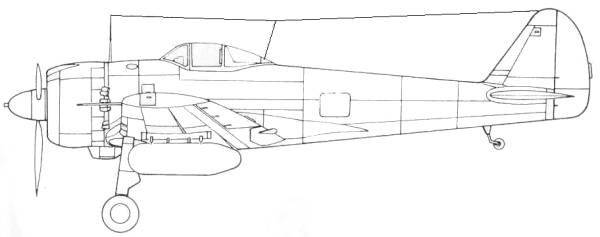
Design
work on the Ki-43 began in December 1937 when the Army instructed
Nakajima
to design a single seat fighter to supersede the Ki-27. The
specification, which was quite exacting by Japanese standards, called
for a fighter with a maximum speed of 311 mph, a climb rate of 5
minutes to 5,000 feet, a range of 500 miles, an armament of two 7.7mm
machine guns and a maneuverability at least equal to the Ki-27.
Within one year the prototype was completed and flew for the first time
in early 1939. A total of three prototypes were built and tested and
although they met the performance requirements of the JAAF they were
criticized by service pilots for failing the maneuverability
requirement. An additional ten were built and some of these were
modified including all around canopies and "butterfly" combat flaps
which improved the maneuverability. The modification proved so
successful that the service pilots now approved. The first production
variant, the model 1A was fitted with a two pitch metal propeller, had
two synchronized 7.7mm machine guns in the upper cowl and attachment
point for two fuel tanks mounted under the fuselage between the landing
gear. The model 1B followed with a different armament configuration.
The model IIA differed in have a larger engine, wing span was reduced
by about two feet, the windscreen was heightened and a new reflector
sight was installed. Strengthening of the wing mounting points allowed
carrying 551 pound bombs and pilots protection was introduced in the
form of a 13mm head and back armor plating and a rudimentary form of
self sealing fuel tank was installed in the wings.
Numerically the
Ki-43 was the most important aircraft in the JAAF and as such served on
every front to which the service was committed. In the closing stages
of the war it was replaced by newer types in most front line units and
the type was used extensively on suicide missions. The Ki-43 I was also
operated by the Royal Thai Air Force during the war, a few being
supplied to the puppet Thai government and used for limited operations
against th US 14th Air Force in Southern China. After the war, salvaged
Ki-43's were flown by pilots of the Indonesian Peoples Security Force
against the Dutch and for a brief time by pilots of the French Groupes
de Chasse I/7 and II/7 against Communist insurgents in Indo-China.
The
Kit
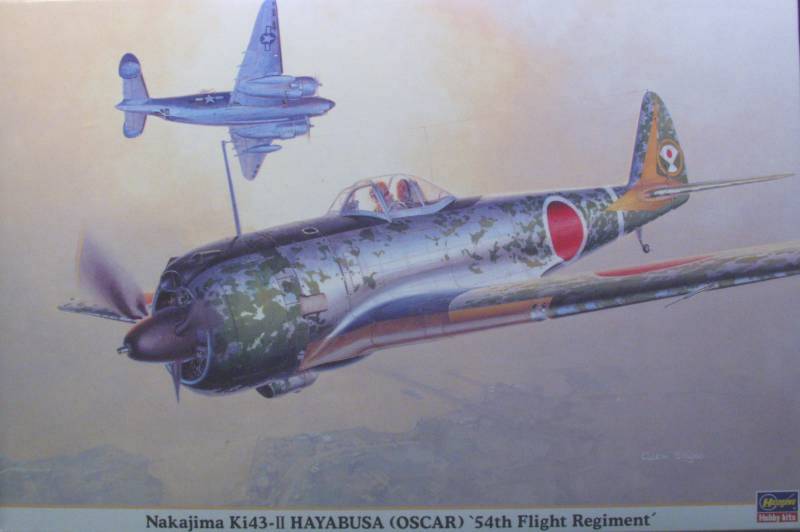
The Hasegawa Ki 43-II comes in a typical Hasegawa top open box with
nice artwork. Since I bought this kit second hand I can't say whether
the parts were bagged from the factory, the only thing bagged when I
got it was the decal sheet. The kit was originally released in the
early 70's and the air frame parts feature very fine raised rivet detail
along with some recessed panel lines and other raised detail as
appropriate. While this sort of detailing has fallen out of favor to
that of all recessed detail, it is actually more prototypical even if
it is harder to deal with from a finishing standpoint. That said the
molding is excellent.
My kit was
released in 2004 and even though the
molds were over ten years old, the parts are nearly flash free and
there are only minimal mold alignment seams to deal with. The finish is
smooth and glossy and other than a couple of very slight indentations
on the fuselage sides where there was interior detail, I found no
surface defects on any of the main air frame parts. These indentations
were so slight that I don't believe fixing them would be worth the
effort and they look a lot like the oil canning effect seen on many
aircraft.
The control
surfaces are all fixed and feature a very fine
texture effect, which is no doubt over scale but should disappear under
a coat of paint. One issue that is problematic deals with the way
Hasegawa chose to create sharp trailing edges on the wings by molding
part of the bottom side on the wing on the top. while this creates a
nice sharp trailing edge, it also creates a seam across the ailerons
and bottom wing where no seam exists. Careful gluing to insure a tight
seam and a small amount of glue squeeze out will help here.
This kit is
quite simple consisting of only 83 parts. Of those 22 are for the
engine which is the most detailed part of the kit. Four parts make up a
pilot figure which is a rather poor rendering and not worth the effort
to use in my opinion. The cockpit is rather plain with minimal details
and most of the complaints heard about the kit center around this
issue. The rather small cockpit opening will hide most of the cockpit
detail anyway so to me it's not an issue. The kit also comes with two
optional bombs and drop tanks. If you leave out the pilot, the drop
tanks and bombs and the display placard the parts count drops to 69
making the kit practically a weekend project. See the photos below.
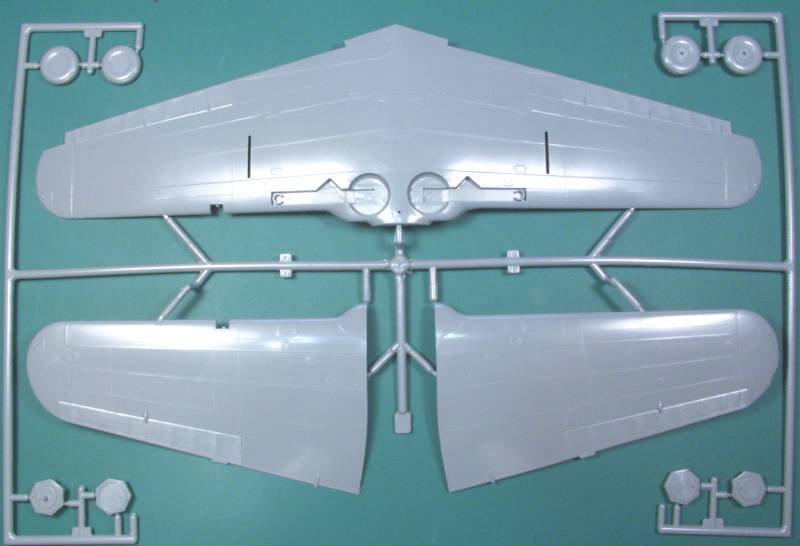
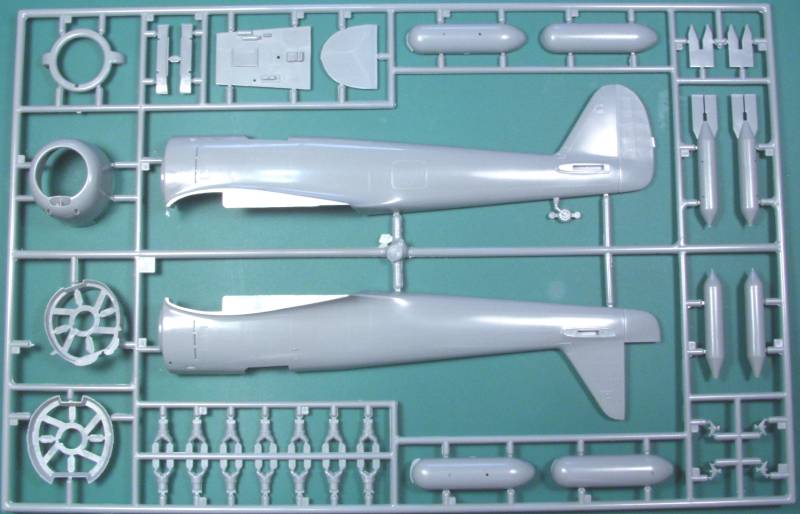
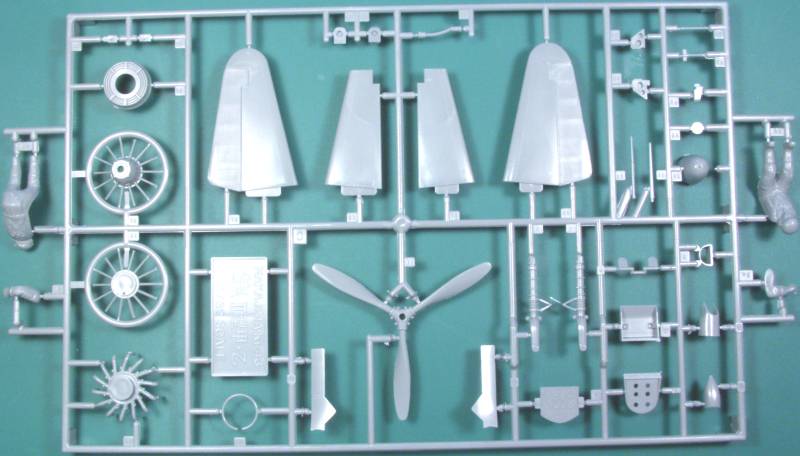
The
clear
parts are nice, clear and thin for the time they were issued.
They feature recessed frame lines which should make masking
easy.
Besides
the canopy, a landing light lens and two gun sight lenses are
included.
See below.
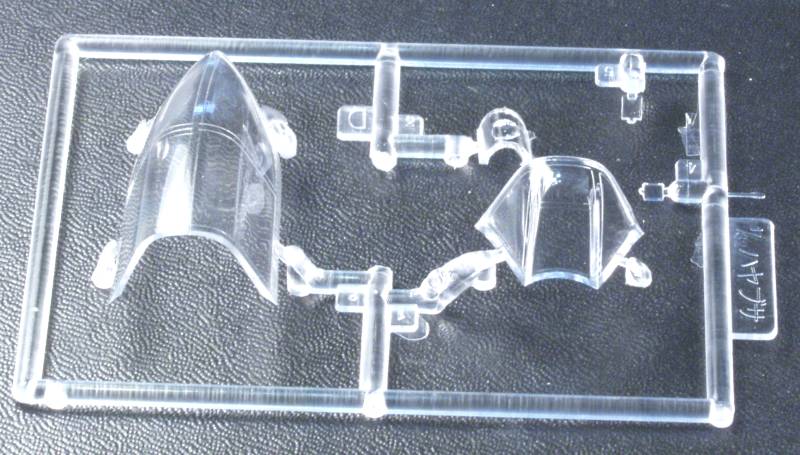
The
decals
are typical Hasegawa from the period, thick and with the white a
more cream color than white. Markings provided cover two
aircraft from
the 54th Fighter Group, with the only difference being different
color
used on the tail markings, one of which is shown on the box top
and not
the three illustrated in the instructions. They are included on
a
separate sheet. This will require stacking the already thick
decals to
create the white surround on the fuselage hinamaru. see below.
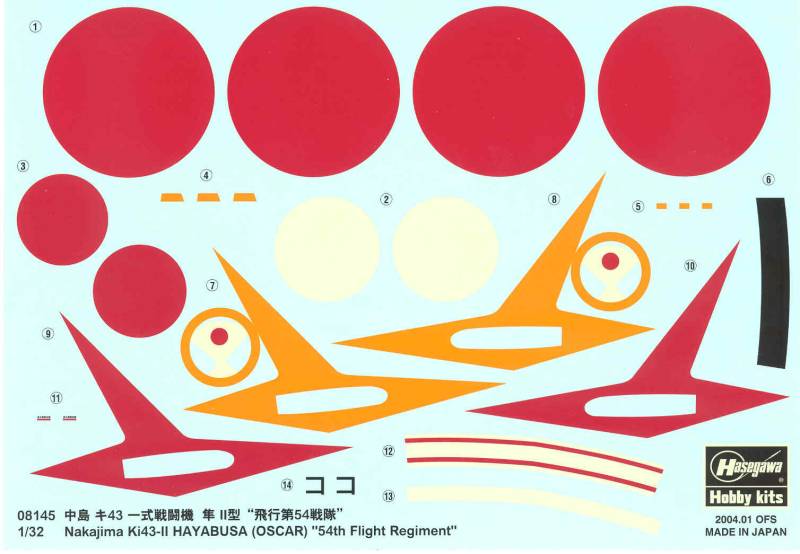 The
The
The
instructions
are printed on a long sheet folded to fit the box
and
create separate pages. The first page has history
in English and
Japanese, the second page has the usual safety
warnings in six
languages, decal instructions in the same six
languages and a paint
chart with Gunze color numbers and generic paint
names in multiple
languages. The third, forth and fifth pages are
the assembly steps
divided into fourteen separate steps. The next two
pages have paint and
marking instructions for markings not supplied and
the last page has a
parts map. There is a separate sheet included that
covers the marking
supplied.
After
Market Goodies
The
only thing I could find currently available for this kit is a
set of
white metal landing gear struts from Scale Aircraft
Conversions (32011)
which probably don't add any real detail to the kit and the
kit landing
gear should be more than adequate from a strength standpoint.
Conclusions
In
spite of it's age the kit fits together well and makes up into
a nice
representation of a Ki-43, recommend to most any skill level.
Links
to kit build or reviews
Builds can be found here
and here.
References
Japanese Aircraft of the Pacific War
by R.J. Francillon
Back
to the 1/32 Scale Japanese Aircraft Page
Updated 7/4/13






 The
The